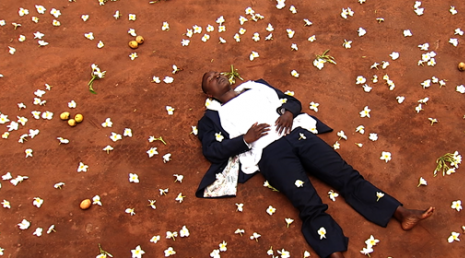Collaboration
Curiosity and challenge are always at the forefront of my creative endeavors: can I do it? What does it mean to work with other people? Who is trustworthy enough to be allowed into my process and what will they bring to the table that I cannot bring myself? I do love being alone and generally need to be pushed to get out of my shell. I am an intensely private person and working is my salvation, the studio my domain. It is not easy to share. But as I have matured as an artist, the quality and intention of my work is changing and I have been able to draw upon the perspective and talents of collaborators across artistic disciplines. Initially, I made dances to deal with my grief. Although it was my choice to come to the United States, I was assaulted by all things new. I had to contend with the overwhelming weight of loss – of country, of family, of anything familiar. Dance was my attempt to mend my broken heart.
It is not that I have outgrown or overcome my sadness, but rather, I have become more aware of accepting responsibility for creating work that inspires a world without poverty of the spirit and mind. I have increasingly tried to confront those African “brands” (war, violence, backwardness, suffering,) that the contemporary African artist can be complicit in perpetuating. I have found kindred spirits. I have found new and literally more expansive ways to express myself with musicians, other dancers, writers, and thinkers.
Solo work has no compromise: it is about the deep exploration and presentation of a singular idea in a singular voice. It is about the power of stripping away all artifice to present your essential self, of having the courage to reveal who you are. For me, it is difficult to undertake this journey with others, even with artists I have the utmost respect for, people like fellow choreographer, Souleymane Badolo, or mentors, Germaine Acogny and Jawole Willa Jo Zollar. It is not that I dislike being challenged or engaging in lively exchange about what the work is (and isn’t). I just find that to be successful in the collective, one must compromise which often leads to a diluting of ideas.
One cannot be declarative about one’s opinion. I believe in this politically correct environment (“I feel your pain”) world we live in, it can be very difficult to assert one’s true feelings. I don’t believe that compromise is necessarily a good thing in a creative process. I believe that everyone is diminished or reduced to rather simple possibilities.
I am not sure how collaboration will change my work. Thus far with “lions” and now with “Miriam,” the collaborators have been working under my direction. When I collaborated with Souleymane Badolo and master Ghanaian drummer Obo Addy on the making of I Ka Nye (You Look Well) in September 2010, I was not satisfied with the end product because all the ideas were compromised, and there was no one clear idea. I also found that we were hamstrung by not having a clear leader: everyone‘s ideas counted equally, which led to a royal mess. Also we simply did not have enough time to fully digest how our many Africa(s) were affecting the work or our approach to the work. Burkina Faso, Zimbabwe and Ghana. There is no united Africa, our attempt at pan-Africanism led to a less than satisfactory work.
Am I just being stubborn? Possibly. It may well be possible that some ideas can only be realized in the solo form, while others may need inclusion of other voices. In working to create “Visible” with Jawole, we were both adamant that the cast of six had to represent a global perspective. With dancers from Japan, Guadeloupe, Burkina Faso, Jamaica, Holland, and the American south, each contributing their experience and inherent knowledge to the piece, I believe that the material resonated with a broader audience. The work had to do with democracy (and my reading of Alexis De Toqueville on democracy) and migration and what happens when differences collide.
The dancers each had their own mother tongue: Japanese, Dutch, French, Creole, American-English. There was also the matter of race and negotiation of race and the historical privileges or lack thereof; in a mixed race situation: white, African, black, Asian. These issues were apparent in the way the dancers would respond to certain demands in the work, for example the American kept repeating a phrase (“you all need to go to your countries,”) even as a simple performance idea, this statement caused real tension in the group, as did questions regarding white versus black.



